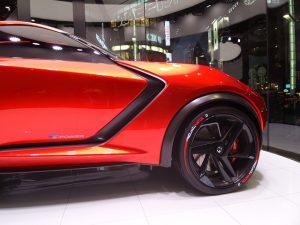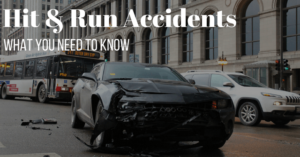Robotaxis Are Changing the World

Robotaxis, also called self-driving vehicles (SDVs) or autonomous vehicles, are transforming the way people live, work, and move around. These vehicles are progressively resulting in a decline in the number of vehicles on city streets, a decrease in road accidents, and a drop in tailpipe emissions. Their widespread adoption could lead to more potential benefits in the world.
How Robotaxis Are Transforming the World
Robotaxis are significantly changing big cities around the world. Some of the positive impacts of these autonomous vehicles include:
A Drop in Traffic Fatalities
The United States Department of Transportation (USDOT) projects that the widespread adoption of SDVs will result in a 90% drop in the number of traffic fatalities. In 2017 alone, USDOT recorded 37,133 deaths due to car accidents. Approximately 94% of these accidents were a result of human error. A 90% drop, therefore, would save up to 30,000 lives in a year.
Reduction in Harmful Emissions
A drop in traffic congestion translates to a reduction in harmful emissions. In fact, a Future of Driving report from Ohio University predicts a 60% reduction of harmful emissions after the widespread adoption of SDVs.
Minimizing Parking Challenges
Robotaxis are enhancing traffic flow in congested cities, like Shanghai, due to their ability to drop passengers off and keep moving. This could become reality in other cities worldwide if people fully embrace and use automated taxis rather than purchasing their own SDVs. With a
drop in the number of people requiring to park their cars, land that currently provides large parking spaces could be converted into attractive public spaces or houses. Arizona’s city of Chandler has already amended its zoning laws to make room for robotaxis, allowing developers to construct properties with limited parking spaces, provided they set aside curb-side passenger loading areas.
Improving the Daily Commute
Robotaxis are significantly enhancing the daily commute. Rather than sitting behind the steering wheel, a commuter can sit in the back, get some work done, or relax and get his or her daily entertainment dose from Netflix or another streaming service. By using robotaxis, American workers are likely to save up to 80 billion hours lost in traffic, saving the economy $1.3 trillion. The bottom line is that robotaxis give commuters more free time to do something productive or simply relax.
Increased Highway Capacity
Given that robotaxis travel down the highway and communicate with each other at continually spaced breaks, more vehicles could be on the road as they would require less space on the road. A Colombia University study revealed highway capacity could rise from 3,000 for human operated vehicles to approximately 12,000 in a situation where all the vehicles on the road were autonomous and communicating with each other at 75 mph. This would be possible because driverless vehicles traveling at 75 mph reduce safe vehicle distance to around 16 feet, compared to more than 115 feet that human-operated vehicles moving at the same speed need for safe stopping.
Reduced Fuel Consumption
Thanks to vehicle-to-vehicle communication systems, robotaxis know what the vehicles ahead of them are going to do even before they do it. For instance, if one vehicle must brake, all of the
vehicles behind it could do so at the same time and as a result, reduce the ripple effect moving through a line of vehicles. Once everything is back to normal, all of the vehicles could then accelerate effortlessly and gradually back up to speed.
Since self-driving cars are connected and travel at the same speed, they can maintain a continuous engine speed. This enables them to lower fuel consumption drastically. A reduction in traffic congestion is also likely to save up to 2.9 billion gallons of fuel per year.
Higher Speed Limits
Given that robotaxis are linked together, maintain a specific safe distance between each other, and can accurately predict the action the vehicles in front will take, they eliminate the need to make room for human responses on the highway. The cars can, therefore, move continuously at higher average speeds, while still maintaining safety and efficient fuel consumption.
Lighter, More Adjustable Cars
Human-operated rideshare taxis are heavier than robotaxis due to the need to accommodate safety equipment. They are built from steel and feature crumple zones as well as steel door beams in readiness for rideshare crashes. Robotaxis, on the other hand, have a low risk of a
crash, which reduces the need to develop cars that can survive nasty crashes. Consequently, these cars are lighter, which enables them to conserve fuel. A person can organize the interior any way he or she wants because there is no specific guideline that dictates where control devices for the car should be positioned. Since there’s no need to worry about the visibility of the driver, all the seats can be adjusted to face inwards.






